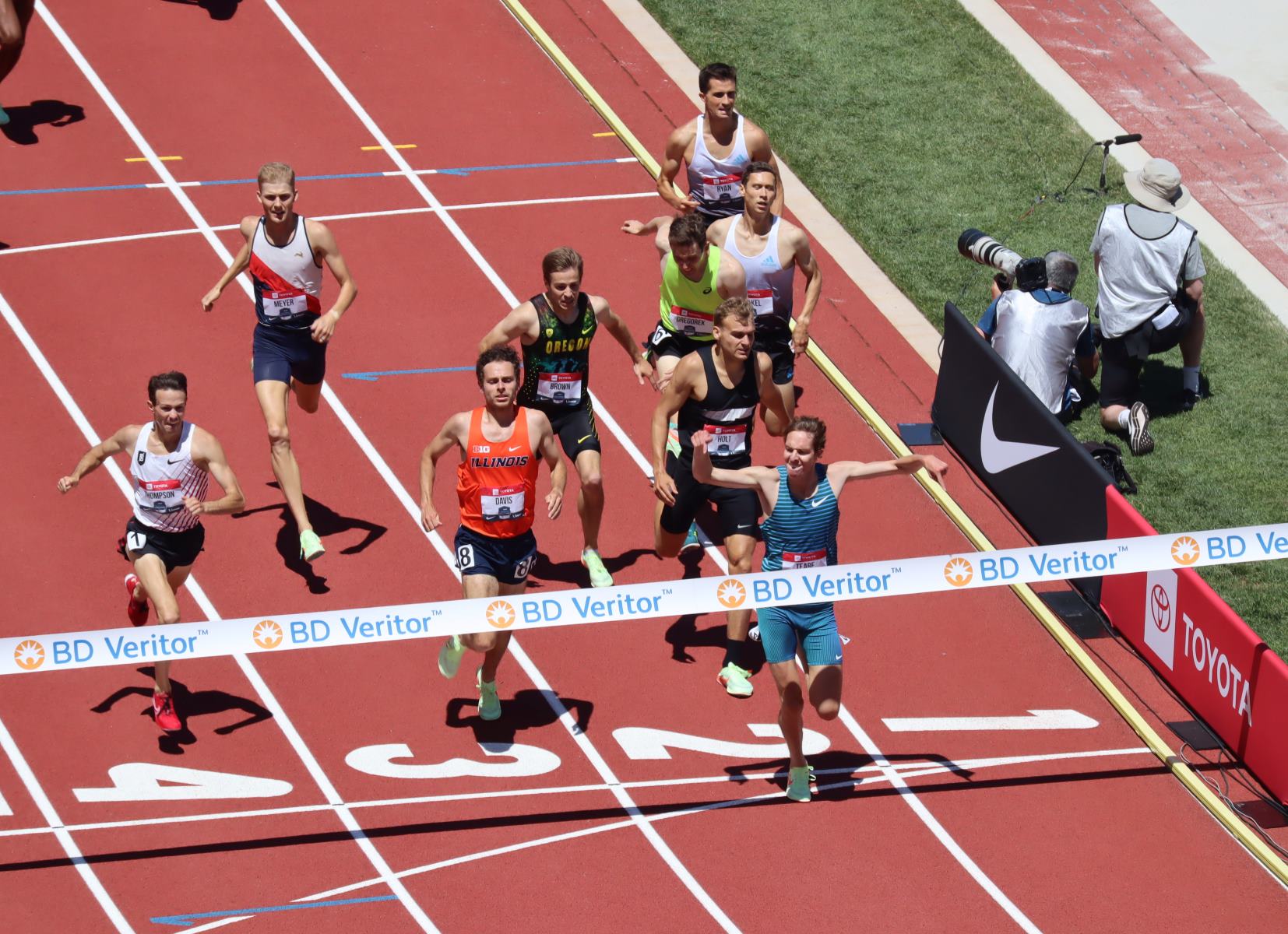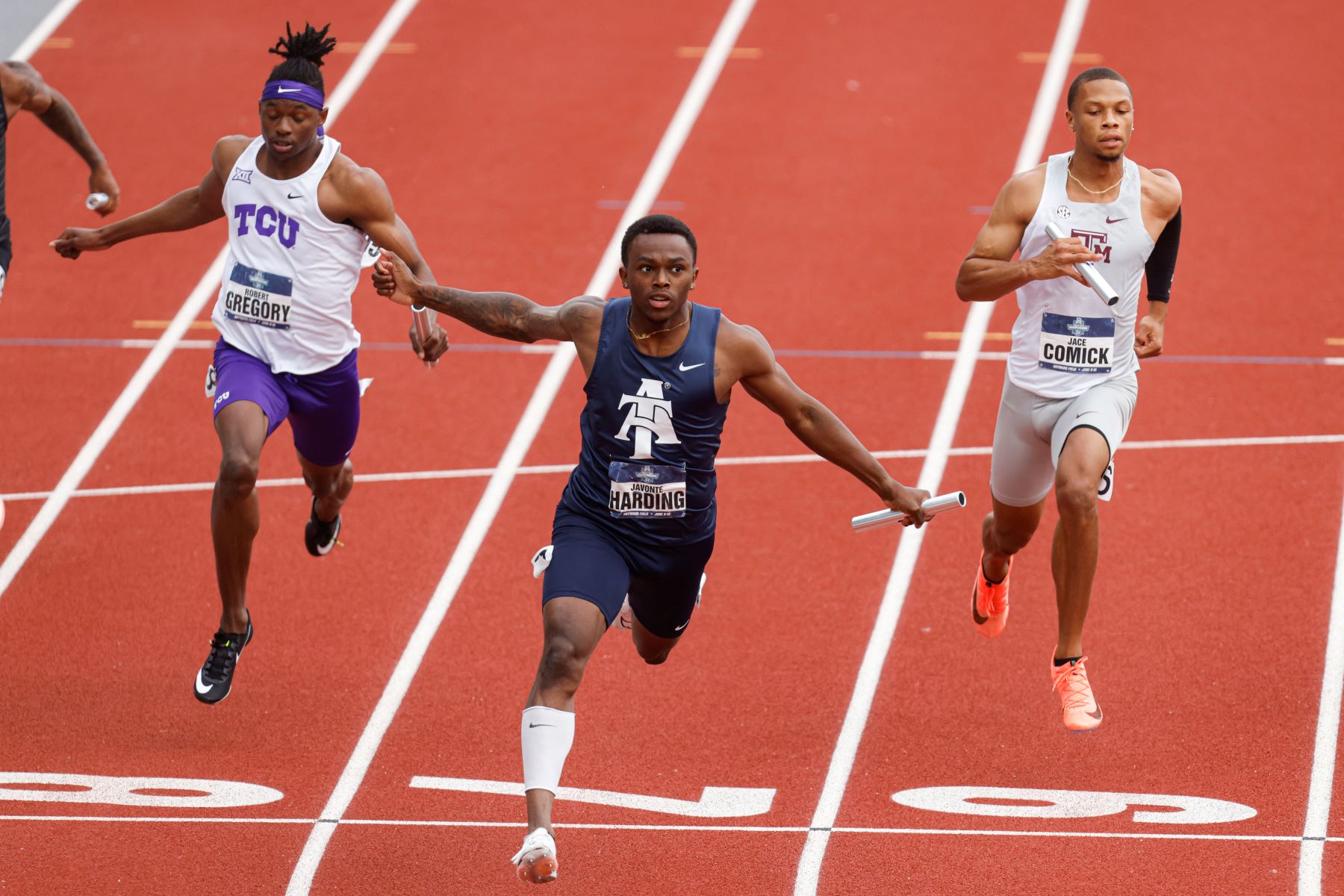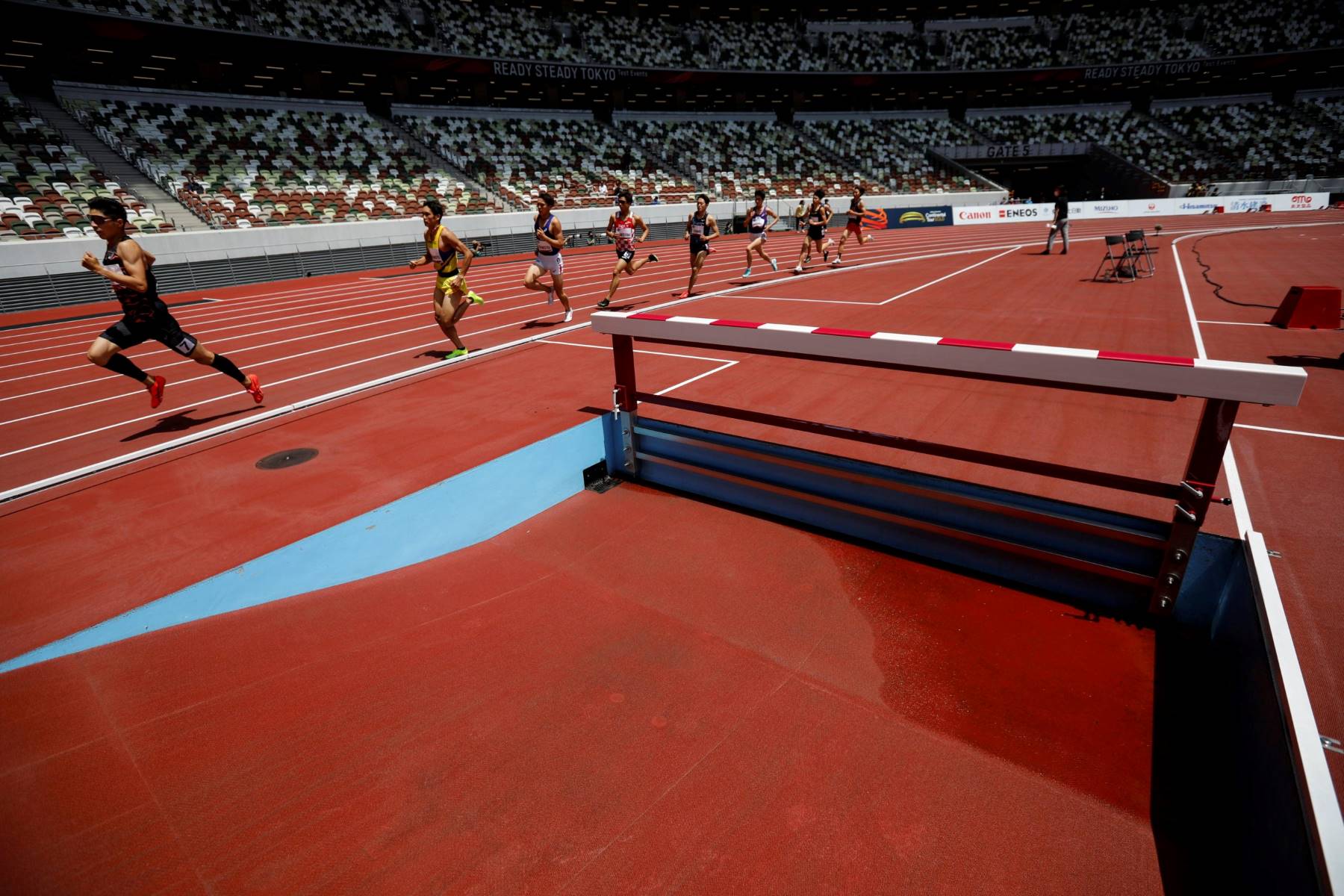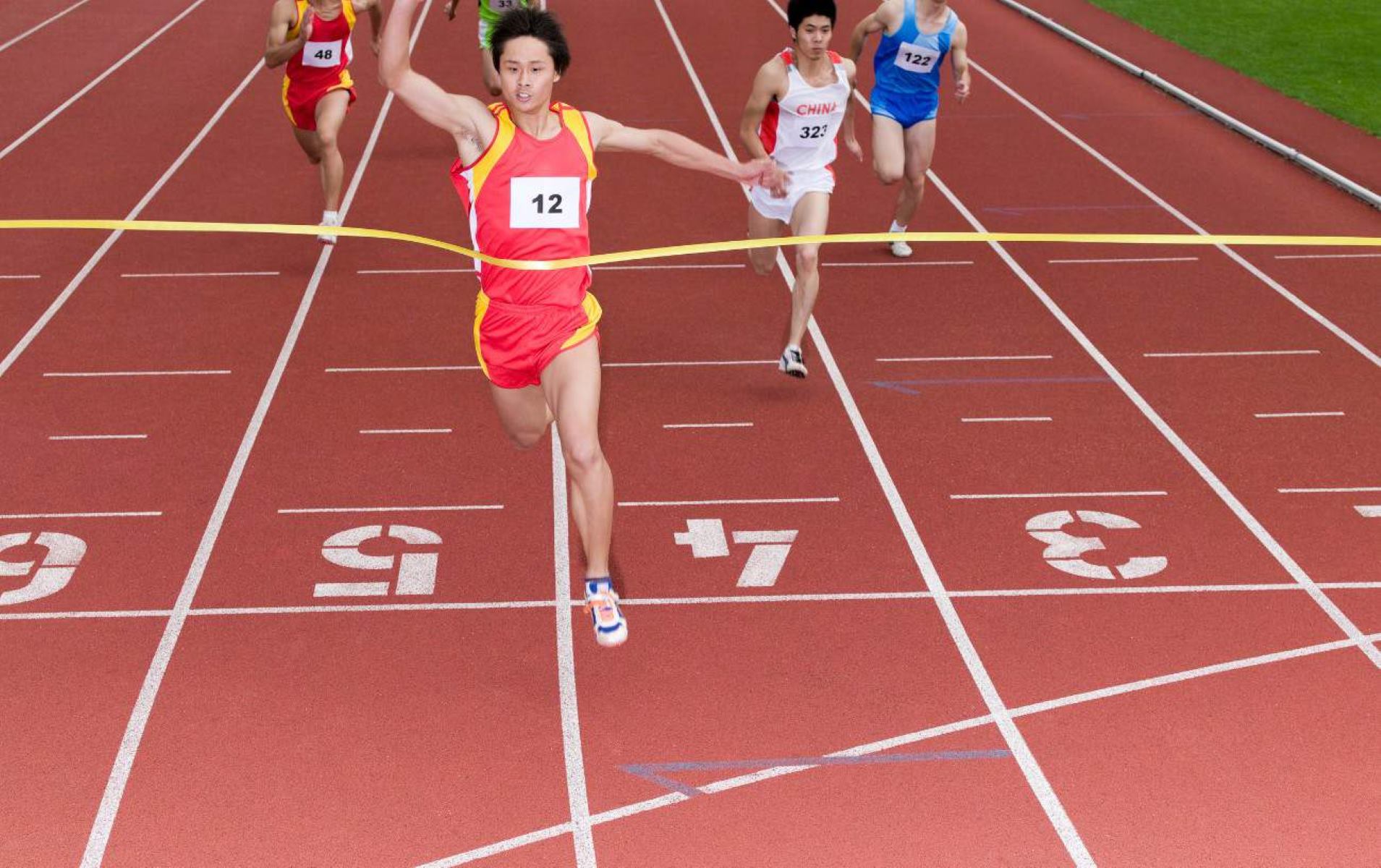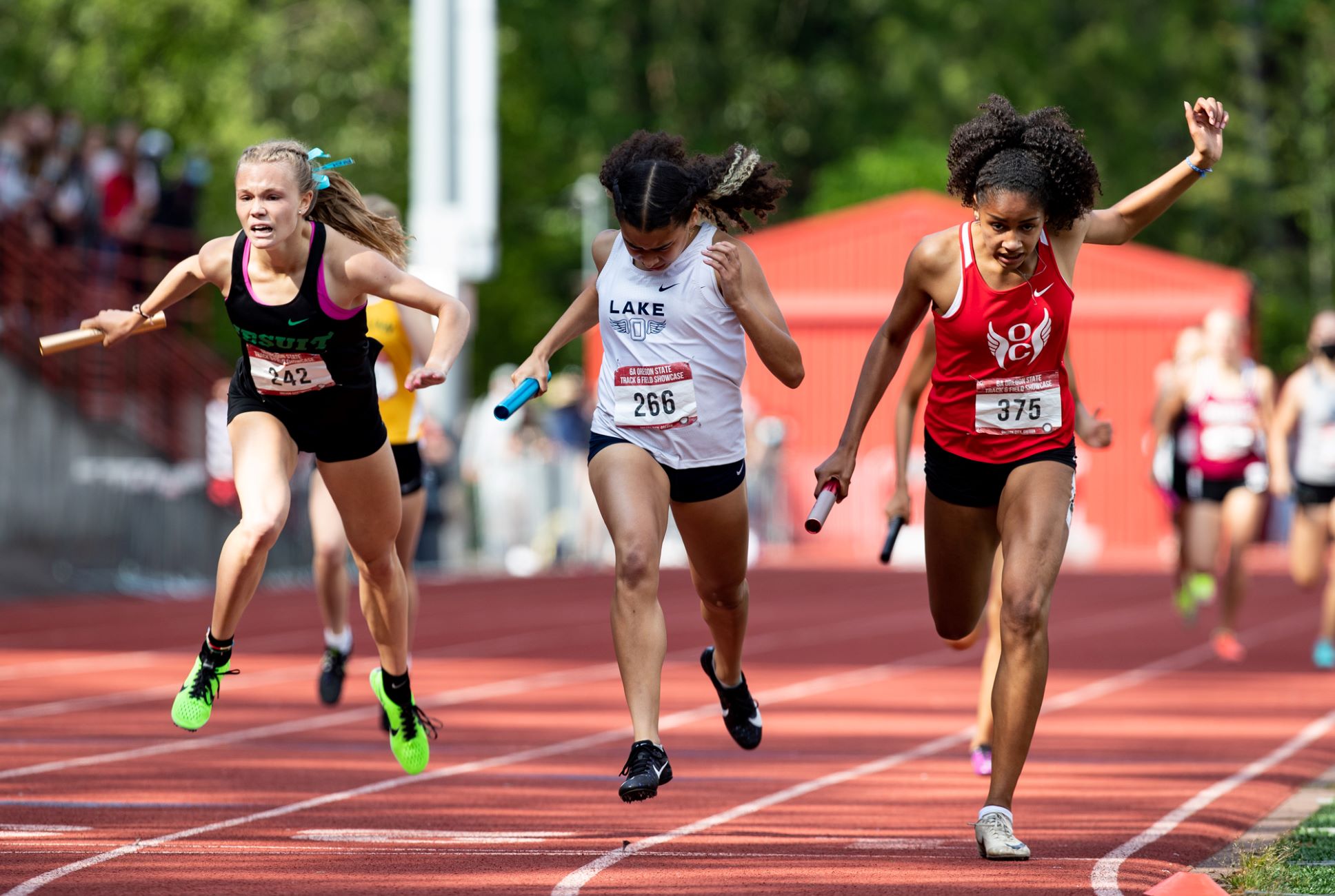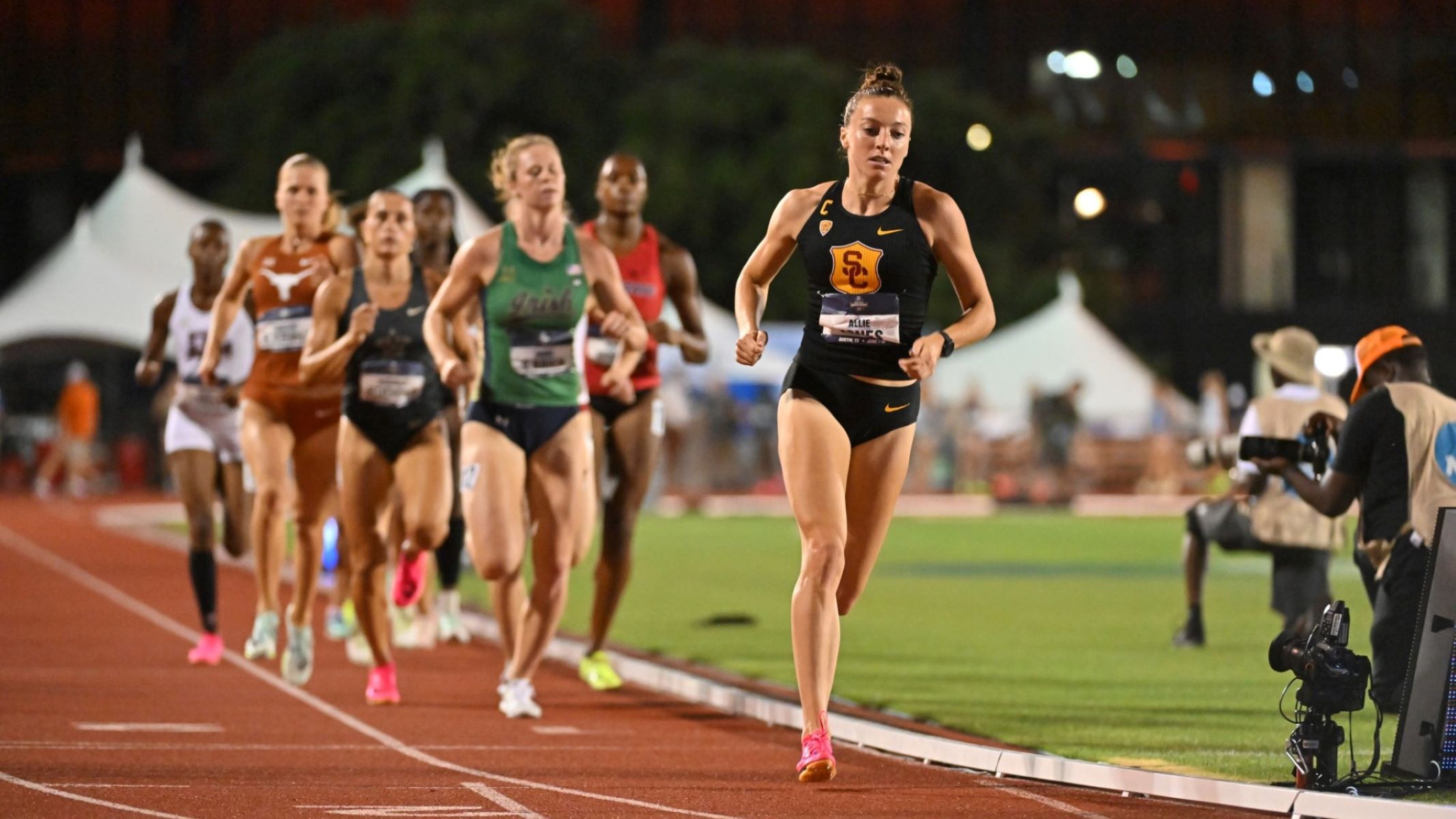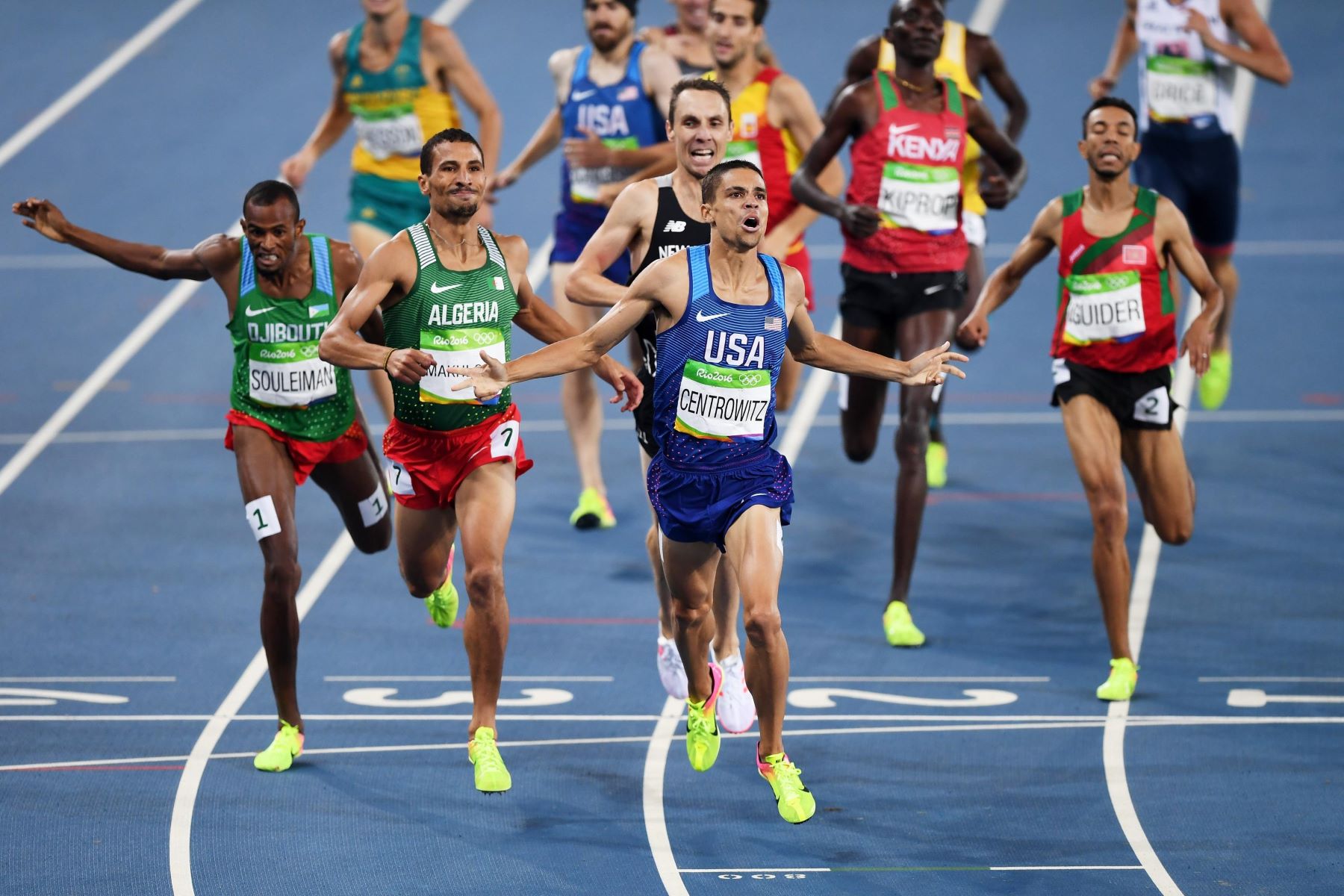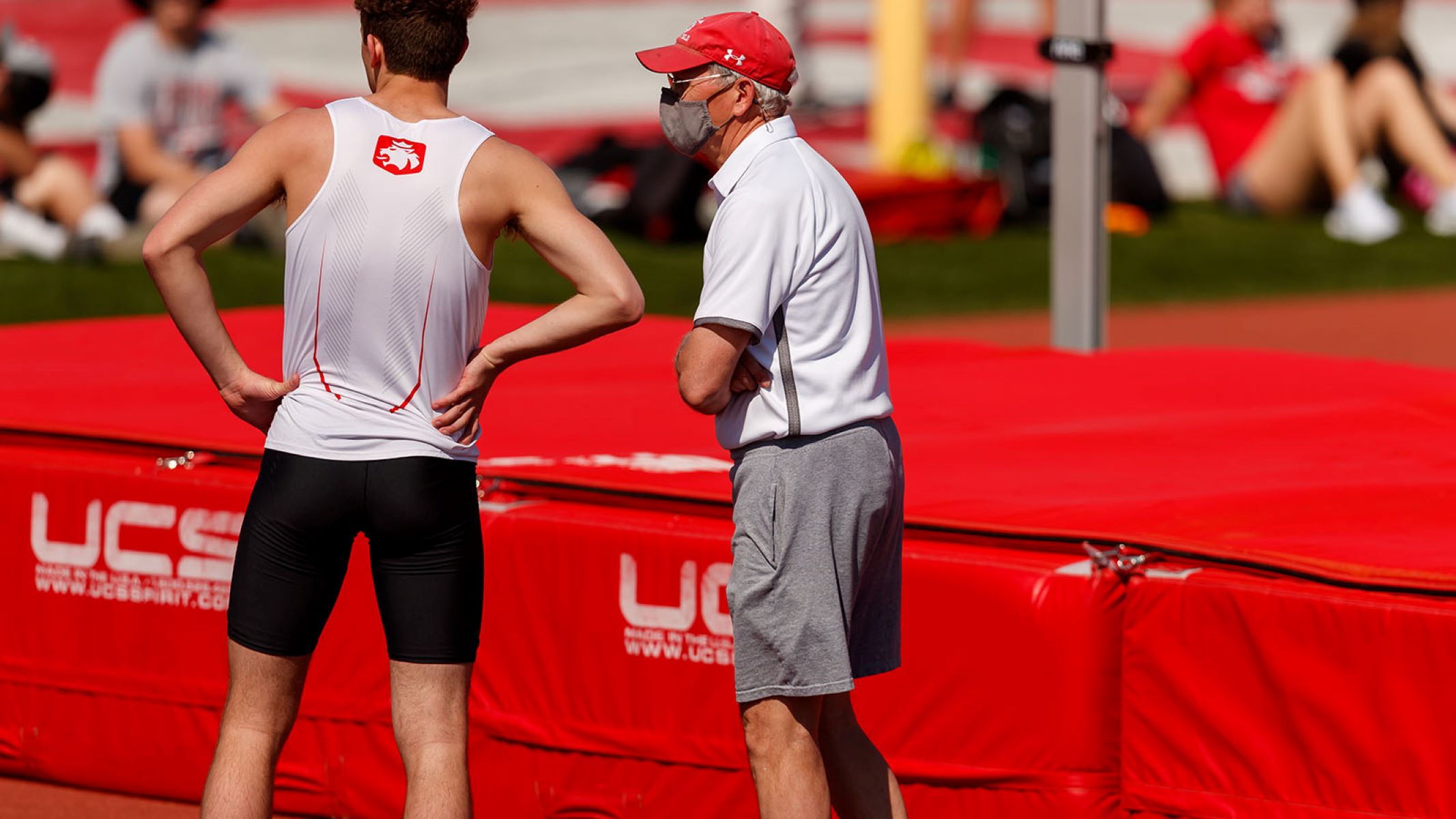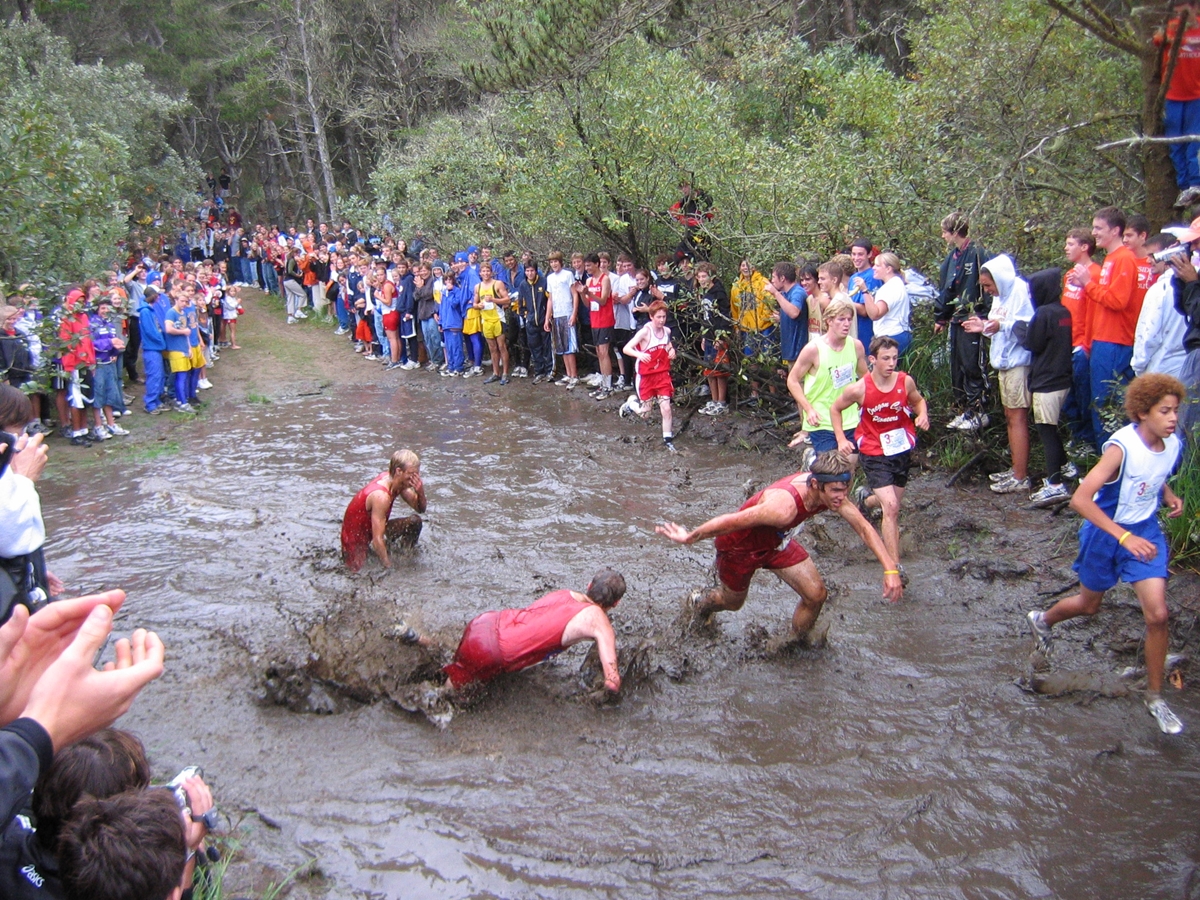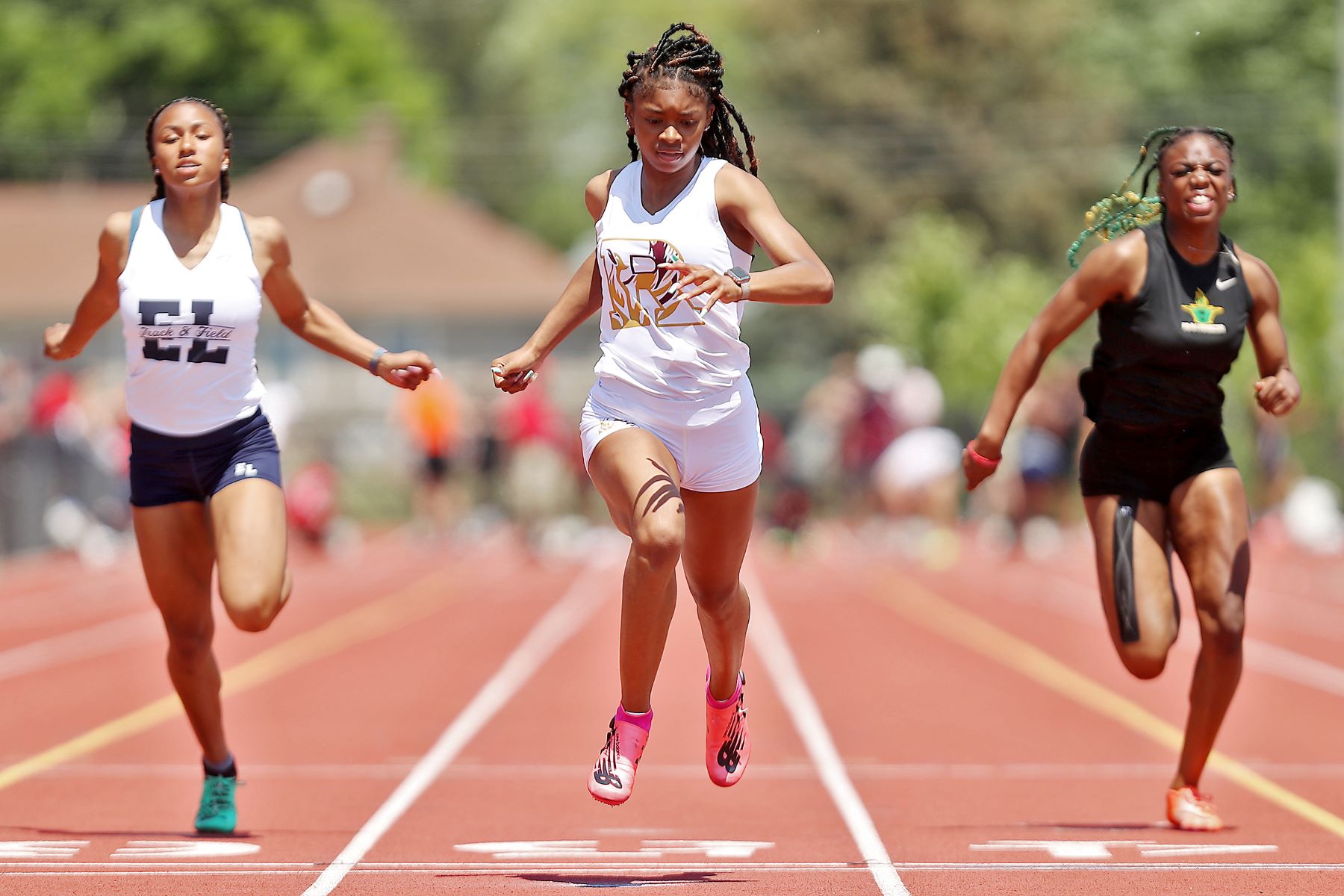

Featured
What Is Distance In Track And Field
Published: September 3, 2023
Discover the importance of distance in track and field with our featured article. Learn how athletes excel in long-distance running, throwing, and jumping events.
Introduction
Track and field is a sport that captivates athletes and fans alike with its combination of speed, strength, and endurance. Within the realm of track and field, distance events hold a significant place. These events, ranging from sprints to marathons, test athletes’ ability to maintain speed over long periods and push themselves to their limits.
Distance running has been a part of human history for centuries. From ancient civilizations to the modern-day Olympics, running has served as a testament to the power and determination of the human body. Whether it’s a 100-meter dash or a marathon, these events showcase the essence of athleticism.
But what exactly is distance in track and field? In simple terms, distance refers to the length of the race or event being contested. It is measured in meters or kilometers, and each distance presents its own unique challenges and strategies for success.
While many people may think of distance simply as a number, it encompasses much more. Distance running requires a combination of physical fitness, mental strength, and strategic planning. From mastering pacing to developing endurance, athletes must fine-tune their training and race strategies to achieve their best performances.
In this article, we will explore the various distances in track and field events, understand the importance of accurate measuring, delve into the factors that affect performance in different distances, and discuss training strategies to excel in distance events. We will also highlight common mistakes to avoid to ensure optimum performance on the track.
So, whether you’re an aspiring track and field athlete, a fan of the sport, or simply curious about the world of distance running, join us as we dive into the fascinating world of distance in track and field.
Definition of Distance in Track and Field
In track and field, distance refers to the length of the race or event being contested. It is a fundamental aspect of the sport and determines the physical demands, strategies, and training methods specific to each event. Distances are measured in meters or kilometers and vary from sprints to long-distance races.
The shortest distance event in track and field is the 100-meter sprint, where athletes showcase their explosive speed and power. This event requires athletes to complete the designated distance as quickly as possible, with little room for error or deviation from the optimal race strategy. On the other hand, long-distance events like the marathon test an athlete’s endurance and mental fortitude as they cover a challenging 42.195 kilometers.
Intermediate-distance events, such as the 800 meters, strike a balance between speed and endurance. These races demand a careful balance between pacing and tactical decisions, as athletes need to conserve energy for a final kick while avoiding being left behind in the early stages of the race. Distance running events like the 5,000 meters and 10,000 meters require a combination of speed, endurance, and strategic decision-making.
Apart from the traditional track events, distance is also a significant factor in cross-country races. These races often cover varying terrains, including grass, dirt, and hills, adding an extra layer of difficulty to the athletes’ performances. Cross-country distances range from 5 kilometers for high school competitions to 10 kilometers for college and championship-level races.
Understanding the different distances in track and field is essential for athletes, coaches, and spectators. It provides a framework for comparing performances, setting goals, and developing appropriate training plans. Each distance category requires specific training methodologies and skill sets, making it crucial for athletes to focus on the distance that aligns with their strengths and interests.
Now that we have a clear understanding of what distance means in the context of track and field, let’s explore the key distances present in various track and field events.
Key Distances in Track and Field Events
Track and field offers a wide array of events that cater to athletes with different abilities and skill sets. Each event has its own unique distance, requiring athletes to specialize and train accordingly. Here are some of the key distances in track and field:
- 100 meters: The 100-meter sprint is one of the most iconic events in track and field. Athletes explode off the blocks and sprint at maximum speed towards the finish line in a straight line.
- 200 meters: The 200-meter sprint also requires athletes to showcase their speed and power. It combines the explosiveness of the 100-meter sprint with the need to maintain acceleration through the curve.
- 400 meters: The 400-meter race is a challenging one-lap sprint that demands a balance between speed and endurance. Athletes need to pace themselves strategically to avoid premature fatigue.
- 800 meters: The 800-meter event is an intermediate distance race that tests an athlete’s ability to maintain speed and endurance. It requires careful pacing and tactical decision-making.
- 1500 meters: The 1500-meter race combines both speed and endurance. Athletes need to balance their pace to save energy for a strong kick in the final stretch of the race.
- 5000 meters: The 5000-meter race is one of the longer distance events in track and field. It requires a combination of speed, endurance, and mental toughness to maintain a consistent pace for multiple laps.
- 10,000 meters: The 10,000-meter event is a true test of an athlete’s endurance and mental fortitude. It demands the ability to maintain a strong pace for a sustained period, often involving multiple laps on the track.
- Marathon: The marathon is the ultimate distance event in track and field. Covering 42.195 kilometers, it requires exceptional endurance and mental resilience. Athletes must carefully manage their pace and nutrition over the course of the race.
These key distances in track and field showcase the different demands and challenges faced by athletes. From explosive sprints to long-distance endurance races, each distance requires a specific skill set and training approach. Athletes choose their events based on their natural abilities and personal preferences to maximize their performance on the track.
Now that we understand the key distances in track and field events, it’s crucial to ensure accurate measuring to maintain fairness in competition. Let’s explore the importance of proper measuring in track and field.
The Importance of Proper Measuring
In track and field, where precision and accuracy are paramount, proper measuring plays a critical role in ensuring fair competition. Accurate measurements of distances are essential to validate record-breaking performances, determine winners, and maintain the integrity of the sport. Here are some reasons why proper measuring is of utmost importance:
1. Fairness: Accurate measuring guarantees that all athletes are competing on the same track and under the same conditions. It ensures that distances are consistent and athletes are not disadvantaged by variables such as uneven lengths or improper markings. This fairness is essential in creating a level playing field for all participants.
2. Record Validation: In track and field, breaking records is a pinnacle achievement. Whether it’s a world record or a personal best, accurate measuring is crucial in verifying these records. Any inaccuracies in measuring could undermine the legitimacy of record-breaking performances, leading to controversy and dispute.
3. Consistency: Proper measuring enables consistency across different tracks and competition venues. By adhering to standardized measurements, athletes can compare their performances across various competitions, allowing for fair assessments and identifying areas for improvement.
4. Rule Compliance: Track and field events adhere to specific rules and regulations regarding distance requirements. Proper measuring ensures that these rules are followed and enforced consistently. It also helps event organizers and officials plan and execute events with precision.
5. Strategy and Performance Evaluation: Accurate measuring provides athletes and coaches with reliable data for performance evaluation and strategic planning. It allows them to analyze race splits, monitor progress, and make informed decisions regarding pacing, tactics, and training strategies.
6. Safety: Proper measuring also contributes to the safety of athletes. Accurate distances help prevent overcrowding and collisions during races. It allows organizers to allocate appropriate space for each event, ensuring the well-being of all participants.
To maintain proper measuring, officially certified devices and methods are used. This includes laser measurement systems, calibrated measuring tapes, and starting and finishing line positioning based on set standards and guidelines.
Overall, proper measuring is a fundamental aspect of track and field. It ensures fairness, validates records, maintains consistency, and enables strategic planning. By upholding accurate measuring practices, the sport of track and field continues to thrive with integrity and precision.
Now that we understand the importance of proper measuring, let’s explore the various factors that can affect performance in different distance events.
Factors Affecting Performance in Different Distances
Performance in track and field events, particularly in different distances, is influenced by a variety of factors. Athletes must understand these factors and adapt their training and race strategies accordingly. Here are some key factors that can affect performance in different distance events:
1. Speed: Speed is crucial in shorter distance events, such as the 100-meter and 200-meter sprints. Athletes must possess explosive acceleration and the ability to maintain top speed for a short duration. Speed training focuses on improving stride frequency, power output, and reaction time.
2. Endurance: Endurance becomes increasingly important as the distance increases. Longer events, such as the 800 meters, 1500 meters, and beyond, require athletes to develop the ability to sustain a strong pace over a longer period. Endurance training involves distance running, tempo runs, and interval training to improve cardiovascular fitness and reduce fatigue.
3. Pacing: Proper pacing is essential in distance events. Athletes must learn to gauge their effort and distribute their energy strategically throughout the race. Maintaining a consistent pace and avoiding an early burnout or finishing too weakly is crucial for optimal performance.
4. Mental Toughness: Mental strength is a significant factor in all distance events. Athletes must have the mental fortitude to push through fatigue, maintain focus during the race, and execute race strategies effectively. Developing mental toughness through visualization, positive self-talk, and coping mechanisms for discomfort is essential for success.
5. Technique: Efficient running technique can be a game-changer in maximizing performance. Athletes must focus on proper form, including arm swing, stride length, foot strike, and body alignment, to optimize energy transfer and decrease unnecessary energy expenditure.
6. Environmental Factors: Environmental conditions, such as temperature, humidity, wind, and altitude, can significantly impact performance. Hot and humid conditions can increase perceived effort and lead to dehydration, while strong headwinds can slow down sprinters. Athletes must adapt their strategies and preparations to accommodate these factors.
7. Training Methods: Different distance events require specific training approaches. Sprinters focus on explosive power, speed work, and strength training. Middle-distance runners emphasize a combination of speed and endurance training. Long-distance runners prioritize aerobic capacity and endurance training, including long runs and interval training.
8. Genetics and Physiology: Individual genetic factors and physiological traits also play a role in performance. Athletes with a higher proportion of fast-twitch muscle fibers may excel in short sprints, while those with a higher ratio of slow-twitch muscle fibers may have an advantage in longer endurance events.
Understanding these factors can help athletes tailor their training and approach to optimize performance in different distance events. It’s important to focus on a well-rounded training program that addresses speed, endurance, pacing, mental toughness, technique, and adaptation to various environmental conditions.
As athletes navigate the complexities of training for different distances, it’s important to be aware of common mistakes that can hinder performance. In the next section, we will explore some of these common mistakes and how to avoid them.
Training Strategies for Different Distance Events
Training for different distance events in track and field requires specific strategies tailored to the demands of each race. Athletes must develop a well-rounded training plan that addresses the necessary components of speed, endurance, pacing, and race-specific skills. Here are some training strategies for different distance events:
Sprints (100m, 200m)
– Focus on explosive power: Sprinters need to develop strength and power through weight training, plyometrics, and resistance exercises to maximize their acceleration and top-end speed.
– Incorporate speed work: Short, intense intervals (e.g., 10-60 meters) with full recovery help improve sprinting technique, stride frequency, and muscle coordination.
– Enhance reaction time: Start and block reaction drills can help sprinters improve their quick starts off the blocks.
Middle-Distance (800m, 1500m)
– Develop a strong aerobic base: Middle-distance runners should prioritize aerobic training to improve endurance and maximize oxygen utilization. This includes long runs, tempo runs, and steady-state runs.
– Combine speed and endurance: Interval training, such as 400-meter repeats or 800-meter repeats at race pace or faster, helps develop both speed and endurance for middle-distance runners.
– Practice race-specific pacing: Simulating race conditions through time trials and practicing different pacing strategies is crucial for middle-distance runners to fine-tune their race execution.
Long-Distance (5000m, 10,000m, Marathon)
– Focus on high-volume endurance training: Long-distance runners need to gradually increase their mileage through long runs, steady-state runs, and progressive runs to build their endurance capacity.
– Incorporate interval training: Including shorter, faster intervals within training sessions can help improve running economy and maintain speed during longer races.
– Train for mental toughness: Long-distance events require mental resilience. Regularly incorporating longer runs, mental rehearsal, and overcoming challenging situations in training can help develop mental toughness.
Technical Events (Hurdles, Steeplechase, Race-walking)
– Focus on event-specific skills: Technical events require athletes to develop specific techniques, such as hurdle clearance, water jump technique, or race-walking form. Practice drills and event-specific workouts are essential for honing these skills.
– Improve flexibility and mobility: Technical event athletes need to prioritize flexibility and mobility to enhance their range of motion and reduce the risk of injury. Consistent stretching and mobility exercises should be included in their training routine.
It’s crucial for athletes to strike a balance between training intensity and recovery. Incorporating rest days, cross-training, and proper nutrition is vital for injury prevention and overall performance improvement.
Additionally, seeking guidance from coaches and sports science professionals can provide valuable insights into individualized training plans, biomechanical analysis, and performance assessments.
By employing these training strategies specific to each distance event, athletes can optimize their performance and achieve their goals on the track.
Now that we’ve covered training strategies, let’s discuss some common mistakes to avoid in distance running.
Common Mistakes to Avoid in Distance Running
Distance running, whether it’s a 5K or a marathon, requires careful planning, proper training, and a strategic approach. However, there are several common mistakes that athletes tend to make when training for and participating in distance events. Being aware of these mistakes can help runners avoid unnecessary setbacks and maximize their performance. Here are some common mistakes to avoid in distance running:
1. Starting Too Fast: One of the most common mistakes for beginners and even experienced runners is starting the race at an unsustainable pace. This can quickly lead to fatigue and diminished performance later in the race. It’s crucial to resist the temptation to exert too much energy at the beginning and instead focus on maintaining a steady pace throughout the race.
2. Neglecting Recovery: Recovery is a vital component of any training program. Failing to prioritize adequate rest and recovery can lead to overuse injuries, decreased performance, and burnout. It’s essential to incorporate rest days, active recovery exercises, and proper sleep to allow the body to heal and adapt to the training load.
3. Ignoring Strength Training: Distance runners often neglect strength training, focusing solely on running. However, building strength in the legs, core, and upper body can improve running form, prevent imbalances, and enhance overall performance. Incorporating strength exercises, such as squats, lunges, and planks, into the training routine can help improve running economy and reduce the risk of injury.
4. Neglecting Speed Work: While distance running is primarily focused on building endurance, neglecting speed work can limit overall progress. Including interval training, tempo runs, and strides in the training plan helps improve running economy, increase lactate threshold, and enhance overall speed and performance in distance events.
5. Improper Fueling and Hydration: Nutrition and hydration play a significant role in distance running. Failing to properly fuel and hydrate before, during, and after training sessions and races can result in decreased energy levels, muscle cramps, and compromised performance. It’s crucial to consume a balanced diet and maintain proper hydration to support optimal performance and recovery.
6. Ignoring Cross-Training: Relying solely on running for training without incorporating cross-training activities can lead to overuse injuries and plateaued performance. Incorporating activities like cycling, swimming, yoga, or strength-based workouts provides variety, improves overall fitness, and targets different muscle groups.
7. Neglecting Mental Preparation: Distance running requires mental toughness and resilience. Neglecting mental preparation, including visualization, positive self-talk, and setting realistic goals, can hinder performance. Developing a strong mindset and mental skills can help overcome challenges and maintain focus during training and races.
8. Skipping Warm-up and Cool-down: Failing to properly warm up before a race or training session and neglecting a cool-down afterward can increase the risk of injury and delay recovery. Warm-ups should include dynamic stretches and light exercises to activate muscles and increase blood flow, while cool-downs should involve gentle exercises and static stretches to aid in recovery and reduce muscle soreness.
By avoiding these common mistakes, distance runners can optimize their training, prevent injuries, and achieve their performance goals. It’s important to listen to the body, seek guidance from coaches or professionals, and practice consistency in training to progress and excel in distance running.
Now that we’ve explored common mistakes to avoid, let’s bring the article to a close and reflect on the importance of understanding distance in track and field events.
Conclusion
Distance in track and field is not just a matter of numbers; it represents the physical and mental challenges faced by athletes across various events. Understanding the key distances and their unique demands is crucial for athletes, coaches, and spectators alike. From explosive sprints to grueling marathons, each distance event presents its own set of challenges and strategies for success.
We have explored the definition of distance in track and field, highlighting the importance of proper measuring to ensure fairness and accuracy in competition. Accurate measurements provide a level playing field for athletes and validate record-breaking performances.
We have also delved into the factors that affect performance in different distance events, such as speed, endurance, pacing, mental toughness, technique, environmental conditions, and genetics. Athletes must consider these factors in their training and race strategies to optimize their performance and achieve their goals.
Training strategies specific to each distance event have been discussed, emphasizing the importance of tailored approaches that address the unique demands of sprinting, middle-distance running, long-distance running, and technical events. Balancing speed, endurance, and race-specific skills contributes to improved performance and overall success.
Furthermore, we have highlighted common mistakes to avoid in distance running, including starting too fast, neglecting recovery, ignoring strength training, and improper fueling. By being aware of these pitfalls, athletes can mitigate setbacks and reach their full potential.
In conclusion, distance in track and field is more than just a measurement; it represents the challenges, strategies, and triumphs of athletes across different events. By understanding the intricacies of distance events and taking into account the factors that affect performance, athletes can train effectively, compete at their best, and make their mark in the world of track and field.
